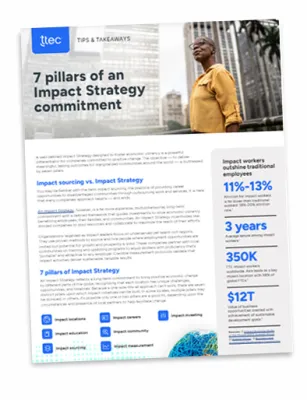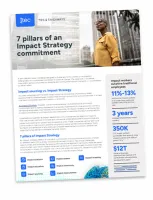If you work for a large U.S. company, chances are you’ve been invited to participate in an employee wellness program. Their popularity among employers is growing at a rapid pace. A recent study from MetLife reports that 72 percent of companies with at least 500 employees now offer wellness programs. From weight loss initiatives and lifestyle coaching, to on-site flu shots and biometric screenings, wellness programs include an array of health incentives that promote overall well being and employee engagement.
In many cases, such programs also offer financial incentives, potentially reducing employee premiums, co-pays, and deductibles as a result. In 2014, nearly 75 percent of employers expect to offer workers a financial bonus for participating, up 57 percent from five years ago, according to research conducted by Fidelity Investments and the National Business Group on Health.
These are great incentives for employees. But what about employers? Before jumping on the wellness bandwagon, companies must consider the pros and cons of such a program from a business standpoint. Seth Serxner, chief health officer at Optum Health, leads the population health strategy for the Wellpoint subsidiary. In this interview, he discusses the business, employee, and customer impact of employee wellness programs.
Customer Strategist: Employee wellness programs are a popular topic among health insurers, doctors, company HR executives, and employees. To what do you attribute the growing interest?
Seth Serxner: Employers have always been very concerned with their employees and their employees’ families. The vendor and healthcare community is finally catching up to be more consumer-oriented. They’re moving to balance clinical models with looking at the patient/member experience, communications, and service levels.
Wellness programs are growing in popularity because of the continuing trend around employers understanding the value of human capital, and how health and wellness fits into the overall business strategy. Health and wellness is good for business, not just a nice thing to do for employees. Healthy and well employees have a positive impact on productivity, energy, and utility of the workforce. Yes, healthcare costs are a driver as well, but the shifting healthcare model is making that less of a leading priority. The conversation about wellness programs is beginning to shift to highlight tangible business outcomes, in addition to the benefit to an employee’s health.
CS: What does a good wellness program look like?

SS: There are many elements to a wellness program. It starts with individual health assessment resources, risk factor analysis, biometric measurement, informational websites, and free screenings and tests. Then there are lifestyle management programs, competitions and incentives to encourage participation and healthy behavior. These must be wrapped up in best-practice engagement strategies in a multi-modal way.
We encourage companies to take a consumer-oriented approach to their programs. There are strong efforts among companies to address consumer needs as a way to spur adoption. Design your program to be convenient for employees to use. Create an appealing and simple website and mobile app people will want to use. Provide only one phone number for people to call to schedule appointments, reach a wellness coach, and ask questions. Offer a personal health concierge to guide people through the systems.
CS: How do you measure ROI of wellness programs?
SS: For a long time, employers saw who is enrolled in what and what their behavior is. But more enhanced reporting and analytics are needed to measure engagement levels, not just participation.
There is always the need for people to feel they’re getting value for their investment. Traditional wellness reporting metrics are program enrollment, participation rates, and other “check box” areas of interactivity. We prefer to look at value of investment (VOI) and return on health (ROH) of wellness initiatives. VOI metrics include employee absenteeism, productivity, workers’ compensation claims, and other outcomes of the wellness programs that connect to the business. These types of metrics help tell the whole story. ROI is just a piece of it. For example, a recent Optum study, Improving Employee Productivity Through Improved Health found that the average productivity savings was $353 per health management program participant, per year.
It’s always challenging to figure out a clean, clear story for C-level executives. Oftentimes people at the lower levels have to distill complicated data into a simple story for senior management. There are a lot of upfront costs to wellness programs, and it’s hard to directly tie it to “we saved a life.” This is why culture is important. Is the organization behind a culture of health and performance? If so, an engagement-based wellness program is a good option.
For example, one retailer invested in a wellness program, and saw a correlation between participation in programs, higher well-being scores, and store sales figures. And, some employers include wellness metrics in their leaders’ business objectives and goals to get people in the program and help keep them healthy.
However, companies do implement programs in different ways, so outcomes may vary.
CS: What’s the biggest advantage to implementing an employee wellness program?
SS: It’s proven that you get people who are performing at a better level. They visit the doctor less, they self-report higher productivity on the job, they miss work less often, etc. They may be in better moods, which can be a benefit to their colleagues and customer-facing employees in terms of customer satisfaction. There are indirect advantages to the company culture and morale, as well. If done right, companies with wellness programs demonstrate that they care about their employees and their health. It’s potentially a benefit that can offset other healthcare cost and services changes.
CS: What holds companies back from implementing wellness programs?
SS: There is a lot going on within a company. As important as this is, it’s not always the most pressing need. Many don’t see it directly impacting the running of a business. But, enlightened companies with the right culture see the value in employee wellness from the employee side and the business side.
CS: Employees are often encouraged to participate in employer-sponsored wellness programs with financial incentives, such as premium discounts or cash. This can sometimes eat into the value and financial ROI of the program. What are your thoughts on this as a tactic?
SS: More employers are questioning the strategy of large financial incentives or “sticks” like charging employees more for not participating, or if they have risk factors like smoking. There has been some consumer backlash to these tactics, which put the emphasis on participation, not engagement.
Wellness programs should be designed to motivate employees, so they see the value of the program without the big stick approach. It’s back to the multi-model approach—what elements of the program will generate the most interest and engagement? Besides overall health, you must demonstrate “what’s in it for me” to employees. Listen to them about when and how they want to be communicated, and what incentives they value most.
CS: What impact does a successful employee wellness program have on a company’s customer experience?
SS: That’s the exact point of the VOI discussion. Healthier employees are more engaged in their work, are more productive, loyal, and better at client/customer-facing interactions. In some case they may even provide more credibility to their messages. For example, customer service reps may provide better customer service since they are not distracted by health issues or low energy.
CS: Where do you see the health insurance industry in the next year? In five years? What does the future look like?
SS: The industry will continue to evolve. Key drivers will be an evolving healthcare landscape, technology-enabled services, a broader value proposition, and a need to address a diverse population culturally and demographically. The medical provider will also be an important part of the future approach to population health, as will an emphasis on healthy communities.















